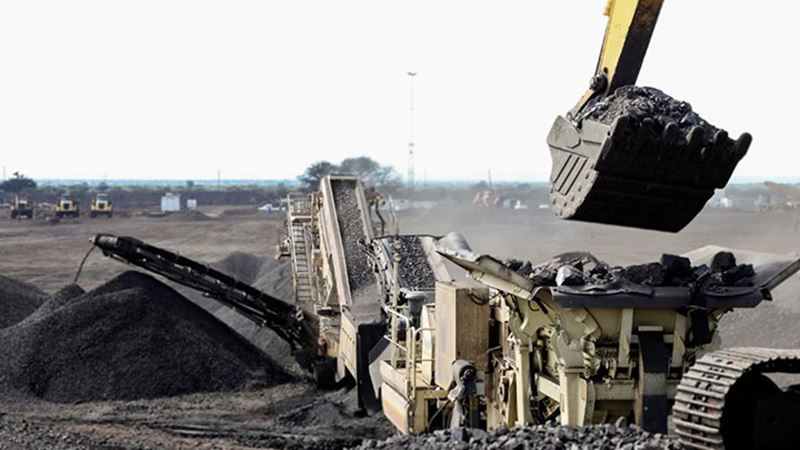Down with downtime

Under increasing pressure to maximize income from mining, optimize operational excellence and find new productivity gains, operators can ill afford to exhaust equipment or rely on underperforming components. Avoiding costly unscheduled shutdowns and breakdowns is a priority, especially as mining operations are typically done in demanding conditions and operators try to achieve higher throughput rates. Obviously, extending planned maintenance intervals (shutdowns) can have a positive impact on the operators’ bottom line.
Downtime is a significant issue faced by the mining industry, and mining and material processing professionals are always looking for ways to enhance availability of the equipment that crushes, grinds and transports ore. It is estimated that the total cost of unscheduled downtime in mining can be as much as 15 times that of a scheduled event. In general, mining equipment is vulnerable to breaking down due to the fact that the processes have to deal with a high tonnage of abrasive materials 24 hours a day, seven days a week, which can exhaust equipment. Therefore, components used must guarantee optimum performance and reliability, so that unexpected maintenance or replacement is minimized or completely mitigated.
“In the last couple of years there has been significant focus on cost-per-tonne reductions and plant availability. Trelleborg has supported our customers by leveraging our purchasing and manufacturing excellence programs, which have realized material improvements in tandem with reducing costs,” says Colin Turnbull, General Manager Mining within Trelleborg Industrial Solutions in Australia.
One of the issues facing today’s mines is the management of wet and sticky ores, which is compounded when mine chutes are tasked with handling larger flow rates of fine ore. A common obstacle to hitting process and production targets lies in the very nature of wet materials. They stick to surfaces, especially chute wall liners that clog and impede the flow of materials, resulting in decreased process rates, sometimes unplanned shutdowns and hours of hosing the chute to clear the buildup.
Many chutes are found throughout processing plants, and their performance and upkeep are critical to ensure tonnage rates are met. Liner systems play an important role in protecting a chute from impact, wear and reducing or eliminating buildup.
Traditional liners used in chutes have often been simple hard metal or rubber designs that merely protect the chute walls from abrasion and damage. However, a large downfall of these systems is their inability to resist buildup due to their rigid construction.
In addition, chute lining systems are usually cumbersome to install and remove, so extended downtime is not uncommon due to the time taken to safely swap out the liners. This is one of the issues Trelleborg sought to overcome for its customers.
Keeping the customer’s ultimate objectives in mind, Trelleborg designed and fabricated a made-to-measure system, the Flexible Lining System, or FLS. This modular solution is made up of a series of self-energized rubber panels, or “fingers,” installed down the wall of chutes. “Our system utilizes a male/female interference fit rather than traditional nut and bolt fastening. Therefore, when replacing the fingers there is no need for scaffolding or personnel on the outside of the chute, which is a major cost saver for mining operations and removes a considerable risk to occupational safety and health from working at heights.
Trelleborg’s engineering team designs the hanger bracket system to fit the existing drill-hole configuration of the chute, so no modifications are required to the chutes. This makes it easy to convert chutes to a highly flexible buildup-resistant liner system. Trelleborg’s FLS system can be supplied with composite ceramic fingers for high-wear areas to further improve the wear resistance and durability while keeping wet, sticky materials traveling through chutes. The composite ceramic fingers reduce the likelihood of unplanned maintenance and extend shutdown intervals considerably.
“Feedback on the installation of the FLS at one of our key iron ore processing clients operations has been extremely positive, thanks in part to the system being so easy to install – the fitting up was perfect and not a single modification was required,” Turnbull says.
Mining equipment
Trelleborg manufactures and designs products and solutions for the mining industry, solutions that control vibration and handle pressure in the most extreme working conditions.
- A variety of hoses, expansion joints and preformed hose bends including slurry hoses, suction hoses, discharge hoses, muff hoses and delivery hoses.
- Wear liner solutions for chutes, hoppers, deflectors and processing equipment.
- Screening systems, a light and flexible alternative to conventional steel wire mats.
- A complete range of conveyor skirting rubber systems including single hardness, multi-hardness layers and colored layers.
In addition, Trelleborg manufactures tires and tracks that are used on off-road vehicles operating in the mine and seals featured in off-road vehicle and mining equipment hydraulics. These sealing configurations are specially engineered to keep harsh media out of hydraulic systems, minimizing wear and extending operating life.
For more information, please go to:
www.trelleborg.com/fluidhandling
This is an article has been reproduced from Trelleborg's T-Time magazine. To download the latest edition, go to: www.trelleborg.com/t-time
Press Service: This article is available in eight languages. Media are welcome to use this article in their own publications. To download the article and pictures in any language go to https://bamboo-contentpartner.com/. If you reproduce information from this release, please give contact details as: www.trelleborg.com.